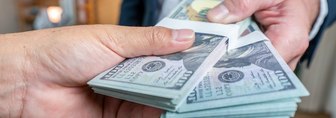Since the early months of the COVID-19 pandemic, at least some Americans have believed that the virus responsible for the outbreak originated from a laboratory in China. The World Health Organization and U.S. government agencies have said that the coronavirus is more likely to have jumped naturally from animals to humans, but the lab outbreak theory has persisted — and the share of Americans who believe it has grown.
According to the latest Economist/YouGov poll, 66% of Americans — including 53% of Democrats and 85% of Republicans — say it is definitely or probably true that the COVID-19 virus originated from a lab in China. Similar percentages believed this even before the Department of Energy’s Office of Intelligence and Counterintelligence said in an assessment reported last month that it believes with low confidence that there was a lab leak of the virus. Nearly two years ago, a May 29 - June 1, 2021 poll found that nearly as many Americans — 59% — believed the lab-leak theory was definitely or probably true.
A year before that, in May 2020 — just half a year after the virus’s emergence — 54% said it was true that the virus originated in a Chinese laboratory.
More Americans say the virus definitely or probably was released on purpose than say it definitely or probably was not. Two-thirds of Republicans believe it was leaked on purpose, while just 35% of Democrats believe that. One in five Republicans do not think what happened was done purposefully, compared to 49% of Democrats.
Most Americans approve at least somewhat of the congressional investigation into the origins of COVID-19. However, only 35% are even somewhat confident the investigation will determine the origin of COVID-19 accurately.
— Carl Bialik and Taylor Orth contributed to this article
See the toplines and crosstabs from the Economist/YouGov poll conducted on March 4 - 7, 2023 among 1,500 U.S. adult citizens.
Methodology: Respondents were selected from YouGov’s opt-in panel using sample matching. A random sample (stratified by gender, age, race, education, geographic region, and voter registration) was selected from the 2019 American Community Survey. The sample was weighted according to gender, age, race, education, 2020 election turnout and presidential vote, baseline party identification, and current voter registration status. Demographic weighting targets come from the 2019 American Community Survey. Baseline party identification is the respondent’s most recent answer given prior to June 1, 2022, and is weighted to the estimated distribution at that time (34% Democratic, 31% Republican). The margin of error for the overall sample is approximately 3%.
Image: Adobe Stock (REDPIXEL)











